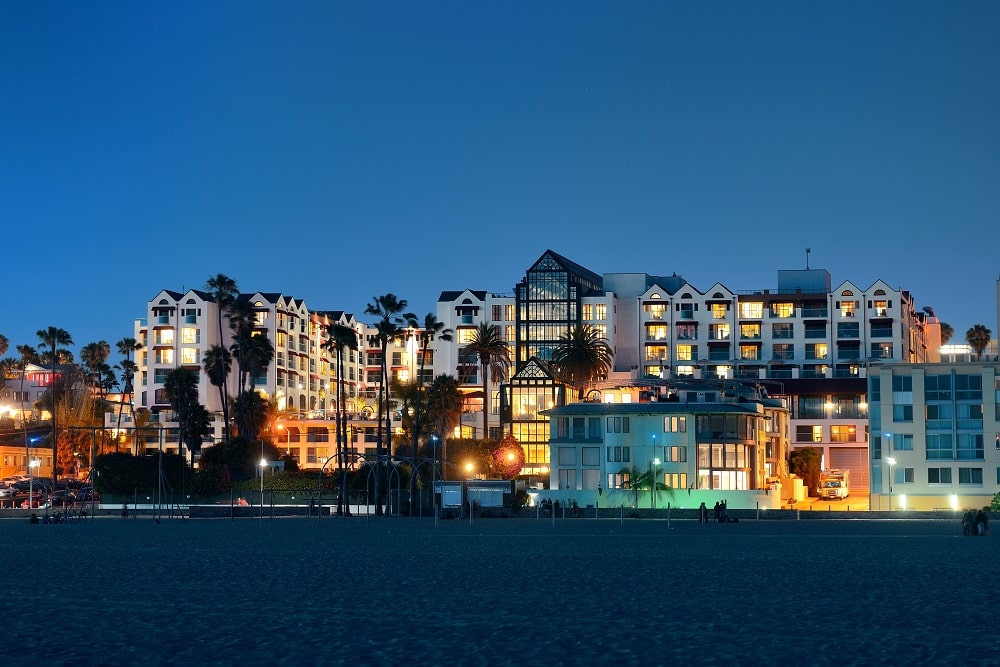Weaving Timeless Threads of Design Elegance
Introduction:
Nestled along the sun-kissed shores of Southern California, Santa Monica emerges as a distinctive jewel in the realm of architectural brilliance. More than just a coastal paradise, the city’s architectural landscape serves as a captivating symphony, harmonizing the echoes of the past with the innovative cadence of the present. In this extensive exploration, we embark on a journey through the architectural tapestry that defines Santa Monica, unraveling the intricate threads of mid-century modern gems, beachfront residences, historical landmarks, green architecture, cultural hubs, and innovative commercial spaces.
Mid-Century Modern Gems:
Santa Monica’s architectural identity is deeply rooted in the timeless elegance of mid-century modern gems. Iconic structures like the Eames House, with its sleek lines, and the visionary designs of Richard Neutra have become veritable landmarks, standing as living testaments to an era that embraced simplicity and functionality. These architectural gems, with their enduring appeal, not only pay homage to the past but also shape the city’s contemporary narrative.
The Eames House, designed by Charles and Ray Eames, stands as an epitome of mid-century modern architecture. Its clean lines, innovative use of materials, and seamless integration with the surrounding landscape have made it an enduring icon. The preservation and recognition of such architectural marvels highlight Santa Monica’s commitment to maintaining a link between history and the present.
Beachfront Residences:
The allure of Santa Monica’s architecture extends to the picturesque beachfront residences that grace the coastline. Beyond their breathtaking views of the Pacific Ocean, these homes are architectural masterpieces that redefine coastal living. The seamless integration of indoor and outdoor spaces, characterized by expansive glass windows and open floor plans, captures the essence of the ocean while reflecting the city’s dedication to aesthetic and functional harmony.
These beachfront residences not only serve as homes but as statements of architectural excellence. The architects and designers behind these structures carefully consider the natural elements, creating spaces that enhance the connection between residents and their surroundings. The architectural language of beachfront residences in Santa Monica is a testament to the city’s commitment to providing a unique and enriching living experience.
Historical Landmarks:
Santa Monica’s commitment to preserving its rich history is exemplified by the numerous historical landmarks scattered throughout the city. The Santa Monica Pier, an iconic symbol of the city’s past, stands as a testament to the enduring charm of architectural heritage. Its Ferris wheel and Art Deco entrance provide a nostalgic journey into bygone eras, inviting visitors to connect with the history of the city.
Preserving historical landmarks is not merely an architectural endeavor; it is a commitment to storytelling. The architectural elements of these landmarks serve as chapters in Santa Monica’s narrative, allowing both locals and tourists to immerse themselves in the city’s history. The meticulous preservation efforts underscore the city’s dedication to maintaining a delicate balance between progress and heritage.
Green Architecture:
In recent years, Santa Monica has emerged as a pioneering force in sustainable and green architecture. The city’s dedication to environmental consciousness is palpable in buildings adorned with energy-efficient features, green roofs, and the use of eco-friendly materials. Beyond reducing the carbon footprint, these structures stand as beacons of inspiration for future architectural endeavors.
Santa Monica’s foray into green architecture is not merely a trend; it is a commitment to a sustainable future. The incorporation of renewable energy sources, thoughtful landscaping, and innovative design concepts showcase the city’s proactive stance in building a sustainable urban environment. The green architecture movement in Santa Monica serves as a model for other cities, demonstrating that ecological responsibility can be seamlessly woven into the fabric of modern design.
Cultural Hubs:
The architectural diversity of Santa Monica extends seamlessly to its cultural hubs, such as the Broad Stage and the Bergamot Station Arts Center. These spaces are not just architectural marvels but dynamic venues for artistic expression. The designs of these cultural hubs prioritize both functionality and aesthetic appeal, creating environments that are not only inviting but also visually striking.
The Broad Stage, with its contemporary design, serves as a cultural nexus, hosting a myriad of artistic performances. The Bergamot Station Arts Center, nestled within repurposed industrial buildings, provides a unique backdrop for galleries and creative spaces. These architectural wonders contribute significantly to the city’s cultural vibrancy, fostering a sense of community and artistic exploration.
Innovative Commercial Spaces:
Santa Monica’s commercial architecture reflects the city’s commitment to innovation and creativity. From the bustling Third Street Promenade to the cutting-edge designs of corporate offices, the commercial spaces seamlessly blend functionality with aesthetics. The vibrant atmosphere created by these spaces contributes significantly to Santa Monica’s overall allure, making it a hub of commerce and creativity.
The Third Street Promenade, with its pedestrian-friendly design and diverse array of shops, epitomizes the city’s dedication to creating a thriving commercial center. Corporate offices in Santa Monica boast cutting-edge designs that prioritize employee well-being and sustainability. These commercial spaces, with their innovative architectural elements, play a pivotal role in shaping the city’s urban identity.
Conclusion:
In conclusion, Santa Monica’s architectural landscape is a captivating symphony, weaving together timeless threads of design that resonate with the city’s rich history and vibrant present. The commitment to preserving mid-century modern gems, crafting beachfront residences that redefine coastal living, safeguarding historical landmarks, embracing green architecture, fostering cultural hubs, and creating innovative commercial spaces has shaped Santa Monica into a city where architecture is not just a functional necessity but a form of artistic expression.
As the city evolves, its architecture will undoubtedly continue to shape its identity for generations to come, leaving an indelible mark on the architectural canvas of Southern California. Santa Monica stands as a beacon, showcasing how a city can embrace its past while embracing the future, creating an architectural legacy that transcends time and captivates the hearts and minds of those fortunate enough to experience its unique blend of design excellence.
Contact Mardena construction to get a quote for your next project!





